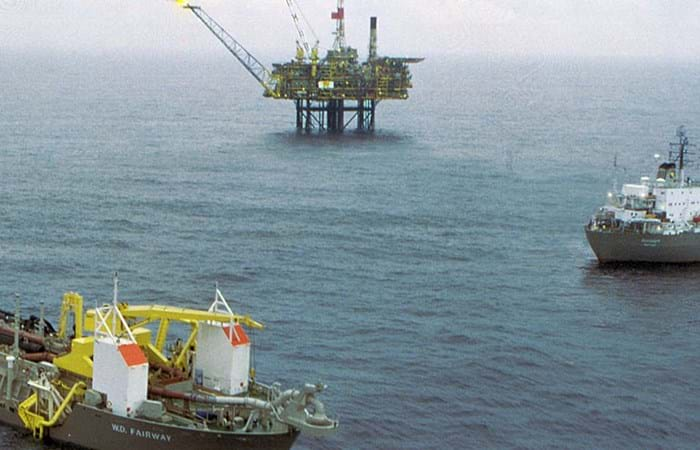The Gannet 'C' satellite field, which is located in the North Sea at 112 miles East of Aberdeen in 95-meter water depth, comprises four drill centres, each having one or more producing wells. The drill centres are connected to the local platform Gannet 'A' by four flowline bundles with a total length of 10 kilometers. A glycol-based gel, filling the annulus of the Gannet 'C' carrier pipe, insulated the individual flow lines. Prompted by degradation of the gel and the resulting drop in oil and gas arrival temperatures at the platform, an EPIC project took off for a re-insulation system. The objective of the re-insulation system was that it should provide sufficient insulation to the bundles in order to safeguard production during the total field life of Gannet 'C', being a minimum lifetime of 15 years. Boskalis Offshore was supported by Hydronamic - the in-house engineering department.
Early July 1997, the installation commenced. Trailing Suction Hopper Dredger WD Fairway and dynamically positioned fallpipe vessel Sandpiper were employed for sand berm and rock cap construction respectively. The sand winning area was found in the outermost northern edge of the Dutch continental shelf, at about 225 kilometer distance from the Gannet field. The local dredging depth was 45 meters. Only one of the two suction pipes was predestined for dredging. For purpose of controlled sand depositing at 95 meter water depth the other pipe was extended, fitted with plates inside and equipped with a purpose-built diffuser at its end. In all WD Fairway deposited approximately 1,500,000 m3 sand at a gross production rate of 100,000 m3 per week. This rate included dredging, sailing, depositing, survey, crew change and weather delay. Sailing speeds up to 16 knots and hopper load volumes up to 18,000 m3 were obtained. Sandpiper, using an innovative fallpipe technique with polyethylene pipe segments, loaded the gravel material at a Norwegian quarry at about 300 kilometer distance of the Gannet field. In all about 130,000 tonnes of gravel was placed on top of the sand berm for stability and insulation. Early January 1998 the gravel dump works were completed.

